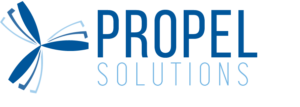The mission of the Harbor-UCLA Medical Center is to put patients first and provide exceptional patient-centered care with compassion and respect, regardless of a patient’s ability to pay. Yet the medical center was previously unable to provide patients with the necessary care given a surgical backlog of hundreds of patients. Patients were waiting several months before receiving eye surgery, even if they were facing the possibility of becoming blind due to diabetic retinopathy.
Staff and physicians worked diligently to serve as many patients as possible; unfortunately the backlog seemed insurmountable. Physicians were frustrated as they were constantly spending more time in the hallways than in procedures due to missing supplies and paperwork. In addition, staff were overworked and spent long hours attending to the never-ending backlog of patients.
To solve this problem the Harbor-UCLA Medical Center decided to implement the Lean methodology derived from the Toyota Production System (TPS). You might be wondering, “What does making cars have to do with hospitals or the health care system?”
Well, they both have a need to improve and deliver a quality product/service to their end customer.
By applying Lean, the medical staff was able to improve their processes and patient flow. Applying the Lean methodology at the Harbor-UCLA Medical Center allowed for the following results to be achieved:
- Reduced the cycle time from check-in to discharge by 50%
- Doubled the number of patients seen per day
- Eliminated the backlog of patients waiting for surgery
- Reduced overtime hours and maintenance of staffing levels
The Harbor-UCLA Medical Center was able to successfully install sustainable change due to their staff and physicians being involved in the process of identifying process improvements. It’s important for organizations to engage their front line staff to identify areas of inefficiencies and solutions for continuous improvement. Involving the staff and physicians triggered the change management process as it made them accountable for the change instead of ‘someone else’. In conclusion, implementing business process improvements resulted in the Harbor-UCLA Medical Center staff and physicians being able to help more patients save their eyesight.
Due to the success of the Harbor-UCLA Medical Center, Lean tools are now being tested across the entire hospital to drive process efficiencies that can help save the lives of more patients and enhance their overall experience.
This case points to the need for hospitals and health systems to look for efficiencies in their workflows and processes to provide quality and effective treatment to patients. The Lean methodology has been implemented in manufacturing to streamline processes to produce quality work in the most efficient manner. It’s time for the health care industry to implement Lean to reduce waste, improve quality of care and standardize procedures.
To learn more about Harbor-UCLA Medical Center’s Lean journey, check out their short film on Toyota’s website. It might inspire you to improve and implement changes within your organization.
Please leave a comment below with examples of other non-manufacturing organizations that you know that are using Lean to improve their processes.








